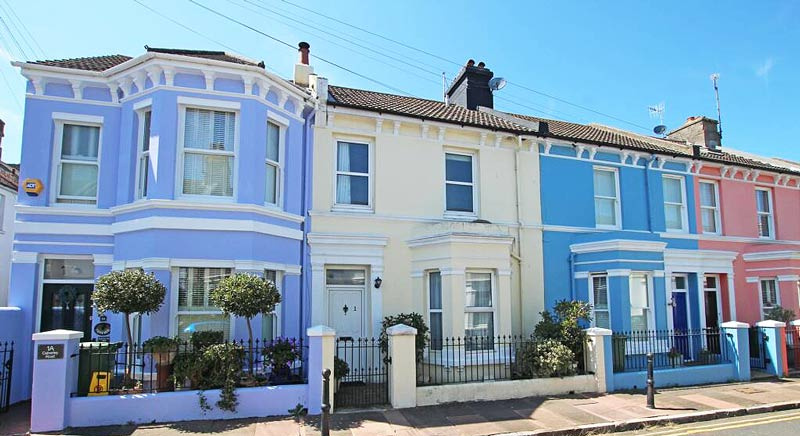Keeping stamp duty relief would help to support first-time buyers
Temporary stamp duty relief has been in place for first-time buyers since September 2022. This means, if you’re buying your first home in England or Northern Ireland, you won’t pay any stamp duty tax on a property priced up to £425,000.
Currently, more than half (58%) of homes for sale in England are free from stamp duty to first-time buyers, though it varies significantly by region.
However, from April 2025, this stamp duty-free relief is set to end, which means first-time buyers will have stamp duty tax to pay when buying a home priced at £300,000, or above. Based on properties currently for sale, only 37% would be free from stamp duty to first-time buyers from April 2025, a reduction of 21%.
How would 2025 stamp duty changes impact first-time buyers in England?
First-time buyers looking to purchase a home in the South West & East of England would be most impacted by the change. Those in the North East would be the least impacted.
In London, fewer than one in 10 homes will be free from a stamp duty charge to first-time buyers from April 2025 if the old thresholds return, compared to a quarter now.
See how your region compares:
| Area | % of homes currently free from stamp duty to first-time buyers | % of homes set to be free from stamp duty to first-time buyers from April 2025 | Change in availability of stamp duty-free homes |
|---|---|---|---|
| North East | 86% | 74% | -12% |
| Yorkshire and The Humber | 79% | 61% | -18% |
| North West | 76% | 58% | -18% |
| East Midlands | 75% | 53% | -22% |
| West Midlands | 71% | 49% | -22% |
| England | 58% | 37% | -21% |
| South West | 58% | 34% | -24% |
| East of England | 56% | 32% | -24% |
| South East | 45% | 24% | -21% |
| London | 25% | 8% | -17% |
Since 2010, the average asking price of a home has risen by 62%, from £230,592 to £373,493. Based on the current average asking price of a home, a first-time buyer will pay £3,675 in stamp duty in 2025, compared with nothing now.
As costs have increased, the average age of a first-time buyer has been increasing over time. The average age of a first-time buyer is now 33 according to UK Finance data, compared with 31 in 2010, and around a third of first-time buyers look to purchase properties over £300,000, which is weighted towards London and the more expensive regions.
Our property expert Tim Bannister says: “The housing market is made up of many connected pieces – as owning your first home becomes more difficult, some people rent for longer, which places an additional strain on the rental sector. Stamp duty is a barrier to movement, and keeping the existing thresholds seems like a logical step to providing some first-time buyer support. Even greater stamp duty reforms in the future could have wider implications, such as helping those who are considering downsizing.”
Keeping stamp duty relief will help to support first-time buyers
New government proposals to help first-time buyers have been positive, including the initiative to give local first-time buyers the first chance to buy homes on new developments. Housebuilding targets and planning reforms should also positively impact those buying for the first time.
Rightmove’s analysis suggests that there are some limitations with a mortgage guarantee scheme, as it’s only likely to be able to support a small number of first-time buyers. Making it permanent would also at least give first-time buyers the confidence that it’s an option for them.
There is an opportunity to go further in supporting first-time buyers, by keeping the existing stamp-duty thresholds. In addition to that, a government review of mortgage affordability criteria and support for lender product innovations would help identify and potentially create more options for a greater number of first-time buyers, helping them with being able to both borrow enough, and save up a large enough deposit.
Our CEO Johan Svanstrom says: “We welcome the new government’s meaningful ambitions for increasing housing supply. It should consider consumer support measures, by retaining the current first-time buyer stamp duty relief threshold of £425,000 in England, and looking at solutions to help first-time buyers with not only their deposit, but also being able to borrow enough from a lender.
“Mobility and housing is an important growth engine for the overall economy. We’re looking forward to lending our support to any policies being considered, by providing our market leading data to help assess the impact different policies could have,” he adds.
What are the current stamp duty rates for first-time buyers?
Stamp Duty Land Tax (SDLT) is a form of tax that is paid to the government when you purchase property or land, above a certain price threshold, in England or Northern Ireland. There are also equivalent taxes in Scotland and Wales.
If you’re a first-time buyer in England and Northern Ireland, and anyone else you’re buying with are first-time buyers, you won’t pay any stamp duty tax on a home priced at or below £425,000.
For a home priced above £425,000, you will pay 5% on the amount you spend between £425,001 and £625,000.
If the home you’re buying is priced above £625,000, you won’t qualify for first-time buyers’ relief. That means the standard rates of stamp duty, from £250,001 and above, will be payable.
You can work out how much stamp duty you’ll pay by using our Stamp Duty Calculator.
READ MORE: First-time buyer mortgage payments 61% higher than 2019
The header image of this article is provided courtesy of Leaper Stanbrook, Eastbourne



